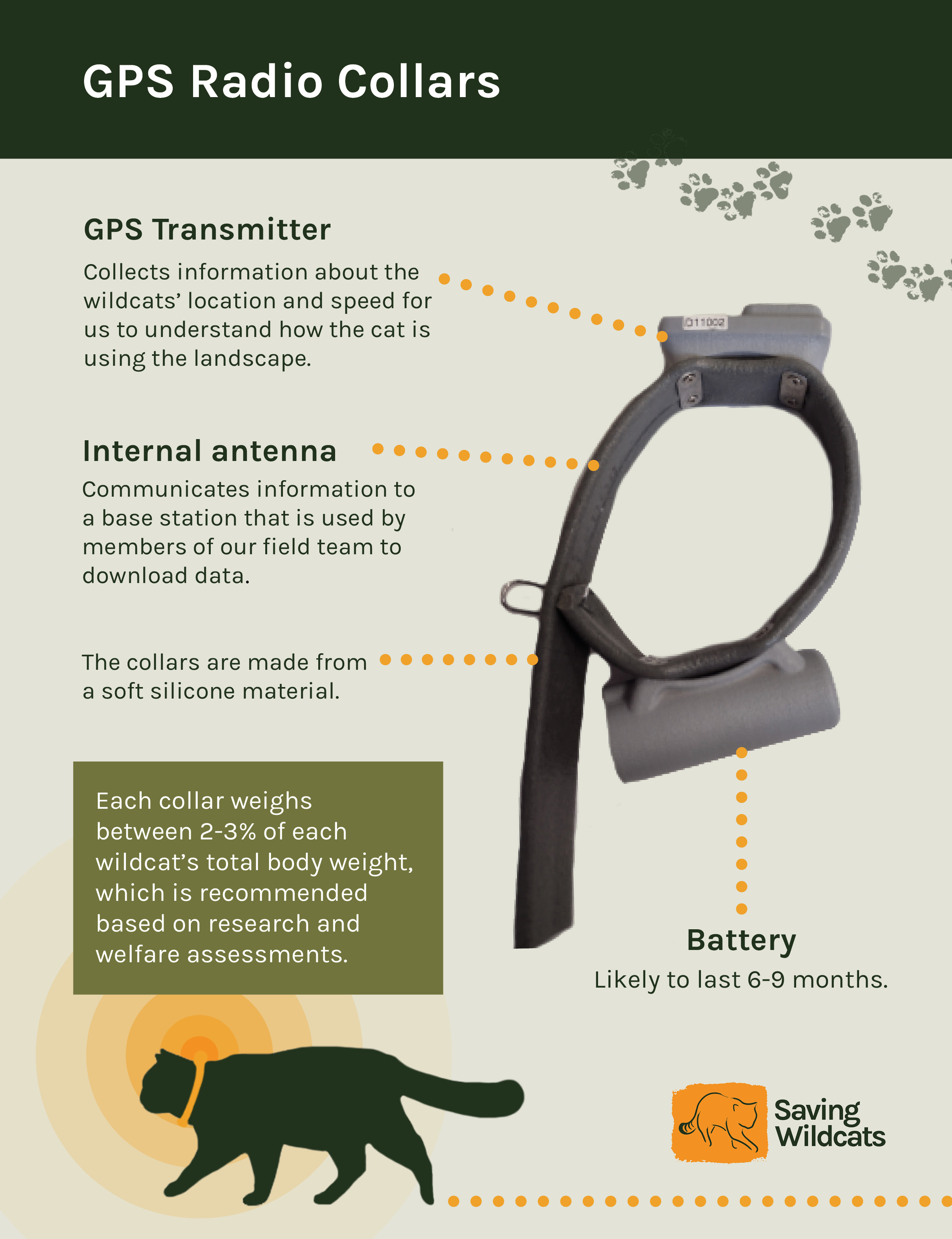Released wildcats are being tracked with GPS radio collars

After years of preparations by the Saving Wildcats partnership, we have begun the process of releasing 22 wildcats into the Cairngorms Connect landscape of the Cairngorms National Park. Once these animals are in the wild, they are being monitored with GPS radio collars. Saving Wildcats aims to prevent the extinction of wildcats in Scotland by breeding and releasing them into the wild. Learning about where they go and how they behave once they are released is important to continue building our knowledge base and to mitigate potential threats. All the information we hope to gather will give us a better chance of ensuring the success of future releases.
GPS radio tracking is a process whereby scientists can observe the movements of a free-ranging wild animal by using the Global Positioning System (GPS). GPS is a network of satellites used to determine the location of something on Earth. This network includes 24 satellites that circle Earth in precise orbits, constantly sending out radio signals. GPS receivers then receive information about where each satellite is at any given moment, determining its own location by measuring the time it takes for a signal to arrive at its location from at least four satellites. GPS operates independently of any phone or internet reception, making it a fantastic tool to use in the Scottish Highlands!
Prior to release, each wildcat will be fitted with a collar made of a soft silicon material that contains a receiver. GPS receivers provide location information in latitude and longitude and provide information not only about where the animal has been, but also when it has been there.
The receivers on the collars will record and store location data from the wildcats’ movements. This data will be stored on their collars until a member of our team downloads the data. The collars transmit a radio signal at timed intervals and the Saving Wildcats team will use this signal to locate the cat. Once the cat has been located, the Saving Wildcats team will download the data remotely to a base station. This information can then be transferred onto a computer, at which point our team can start learning about the movements and behaviours of the wildcats.
The collars are fitted snugly to the neck of the cat by experienced specialists, including the project’s dedicated veterinarian, to minimise the risk of the cat removing it too early, or it affecting their behaviour. When the battery level is low, the Saving Wildcats team will trap the cats and remove the collars. The collars will degrade over time, but it is most likely that they will be manually removed by Saving Wildcats staff before this happens.
A team of experienced field staff and trained volunteers will be responsible for tracking the wildcats post-release, using their GPS radio collars. We will share findings from the data once we are able to assess and analyse it. If you are interested in receiving regular updates from the project will share these via the Saving Wildcats newsletter.
Wildcats are best left undisturbed by humans and it is an offence to deliberately or recklessly disturb a wildcat. Wildcats are very elusive, meaning it would be extremely rare to see one in the wild and we would ask that members of the public do not actively look for these wild animals once they have been released. To have the best chance of seeing a wildcat in the Highlands, we would recommend visiting Highland Wildlife Park, where visitors are able to see wildcats in enclosures that are on display to the public. These wildcats are members of the UK’s conservation breeding programme.

